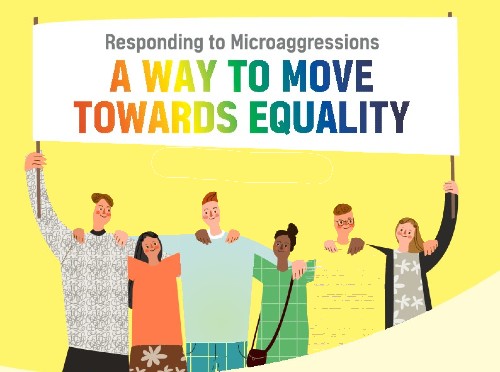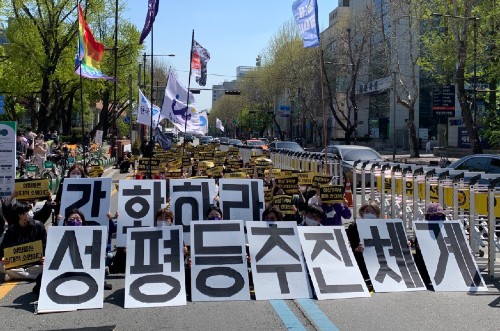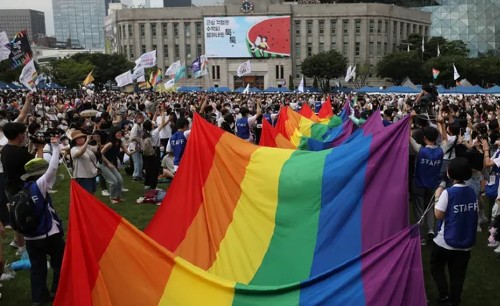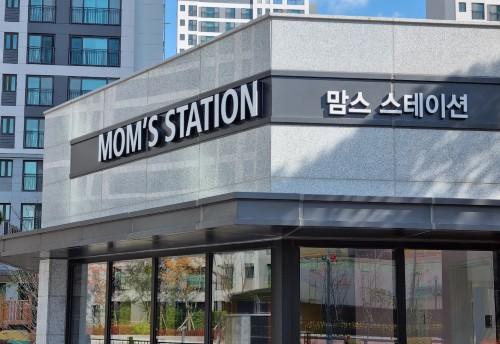
Since the early 2000s, many people have been trying to enact the anti-discrimination law in Korea. A survey conducted by the National Human Rights Commission of Korea in December of 2021 showed that 54.8 percent of respondents had seen or heard some forms of hate expression. According to the agency’s 2022 survey, 67.2 percent of respondents said they needed anti-discrimination legislation. Sometimes we experience or witness discrimination that is ubiquitous as a routine matter in our daily lives. It is also easy to encounter hostility towards particular groups based on their race, religion, or any other social categorization.
This discrimination and hatred can also appear in the form of microaggressions. The term “microaggression” is a combination of words, ‘micro’ and ‘aggression,’ which refers to a subtle, inexplicit type of discrimination, usually shown through almost undetectable words, actions, or environmental structures. Therefore, they often go unnoticed by the aggressor. When these microaggressions pile up, they can cause serious damage to people. The expression, “death by a thousand cuts” shows the problem of a microaggression culture in our society. The Chonnam Tribune looked into different cases of microaggressions that social minorities are facing in their day to day lives.

Recognizing Gender Discrimination
“You drive really well for a woman!” It may sound like a compliment at first, but it can have a negative lasting impact on someone. This is one example of a gender microaggression which is the most common microaggression in the country, one that has traditional customs and culture of clearly distinguishing the roles of men and women. Even now, this culture has not changed completely. People are exposed to and experience traditional customs and culture from a very young age. Consequently, it may increase gender inequalities such as discrimination and violence in our society. Cultural backgrounds can also be one of the factors to make gender microaggressions pervasive across the country.
In recent years, many newly built apartments have installed a “Mom’s Station” within their apartment complexes. The station is a small indoor waiting area for parents or guardians to sit in as they wait to meet their children coming home from school. Naming the space “Mom’s Station” reinforces traditional gender roles and stereotypes based on the division of roles of men and women, and who should care for their children. It also implies that while women should stay at home to take care of the children, men should always be the ones in the family supporting them financially.
There are other thoughtless comments that can also further stiffen our already rigid views on gender as follows. Saying “You need a haircut” to a man with long hair, asking only male students to help move heavy objects and telling an aspiring male nurse “You should be a doctor instead.” These are all examples of gender microaggressions. There are no gender-specific hair styles and female students can be just as physically capable as male students. Men can be nurses if they choose. Yang Eun-seong (Junior, Dept. of Family Environment and Welfare) said, “I hope that men and women can be judged based on their abilities and potential rather than their gender. Everyone has the freedom and right to do things regardless of what is considered to be gender norms.

Facing Racial Discrimination
Koreans are taught at an early age that they are ethnically homogeneous. Many take pride in their country’s homogeneity. However, as the international population within the nation is rapidly growing, a newly multicultural Korea is faced with a difficult task: achieving racial harmony. Although most Koreans are open to racial diversity and are not blatantly racist, an unfamiliarity with other ethnicities and the belief that only ethnic Koreans can be Koreans may lead to subtle racism.
Verbal forms of microaggressions are the most common and easily overlooked. Saying “You speak good Korean.” or “You’re so Korean now!” may seem like a nice compliment, but to someone residing in the country, this alienates the person from a place called “home,” sending an underlying message; “You are and will always be a foreigner. You do not belong here.” You can also force your stereotypical perceptions of certain races onto others with just a few words. Telling a Chinese person “You are not loud like all the other Chinese people I know.” or to a black engineering major, saying “Wow, I don’t see a lot of people like you in this field.” are all ways to put people into a box.
People also can show hostility towards other racial groups through non-verbal communication. “It’s the constant staring. I understand that I stand out because I look different, but people don’t even try to hide that they are looking. I’ve even had people slow down when they were driving to look at me.” Madelyn Hobson (Sophomore, Faculty of Business Administration) said, “I feel like a fish in a fishbowl sometimes.” Like Madelyn, many non-ethnic Koreans feel out of place when they are excessively stared at, or even perceived as a threat to native residents.
Some microaggressions may even be environmental. This refers to when a certain environment, such as an office, school, or even society as a whole systematically excludes or invalidates a minority’s identity. A lack of racial minority representation in the media or in the workplace that do not take cultural traditions seriously are examples of environmental microaggressions.

Experiencing Discrimination Against Sexual Minorities
Sexual orientation is an extremely taboo subject in Korea. Many Korean members of the LGBTQ+ community remain closeted in order to maintain jobs, relationships with friends, and even family. Korea still appears to be a highly homophobic and transphobic society. The lack of exposure to different sexualities and a virtually nonexistent education creates a garbled idea of sexuality or sexual minorities in people’s minds. This only reinforces the ignorance-fueled, thoughtless comments many sexual minorities have to endure while living their lives as members of society.
Because the majority of the population is heterosexual, many people try to force these heteronormative cultures and behaviors onto people who do not necessarily fit into this category. Asking a same-sex couple “Who is the girlfriend or boyfriend?” and saying things such as “But have you at least tried to date a man or a woman?” or “It’s just a phase, it’ll pass.” are just a few of many examples. This assumption of heterosexuality can also be caused by social structures. A non-binary person may also feel invalidated when the only options on a form are male and female. This refusal to be inclusive makes sexual minorities feel erased and out of place.
You may have seen the rainbow flag in queer parades, which include the Seoul Queer Parade that took place on July 6, and these flags have become a hot issue recently. This rainbow flag, also known as the pride flag, means solidarity for sexual minorities and celebrates inclusivity and diversity against discrimination based sexual orientation and gender identity. This was created by the American artist Gilbert Baker. He expressed various personalities and sexual orientations as rainbow colors and light. This rainbow-colored pride flag is the power to gather the persecuted LGBTQ+ community.

Responding to Microaggressions
Microaggressions cause almost unnoticeable harm, invisible on the surface. Because they are so hard to pinpoint, some people fail to recognize the significance they hold. So what is the big deal? “There’s a growing body of research that shows that microaggressions have many serious health effects, both mental and physical,” according to Dr. Nancy Sin, an associate professor at the University of British Columbia, in an article published in September 2022. Not only can they cause damage to individuals, but they can also reinforce environmental structures that hold together biased and unfair social systems.
How do we deal with subtle acts of hostility when they come our way? How should we respond to microaggressions? It seems like an impossible mission to recognize and fight against those expressions since they are so commonplace around us. However, we can minimize microaggressions in our everyday lives. To do this, the first step is self-reflection. It is extremely important when it comes to putting yourself in other people’s shoes and re-evaluating the thoughtless comments you have said. The next step is intervention whenever we witness them. As a third person and neither a perpetrator nor a victim, it is your job to pay attention to microaggressions occurring near you and inform others about their negative impacts.
The most important step, by far, is your willingness to learn and change. When you are called out for saying something hurtful, do not try to justify yourself. Admit that you are in the wrong and be responsible for your actions. Take time to learn about what is acceptable to say or do to others and become more educated when it comes to different social groups, even if you don’t identify with them. With just a little bit of effort, we as a society can change for the better. Being able to prevent yourself first from displaying microaggressive behaviors is a key to building a safer community where everyone can be themselves.
By Lee Eun-ji, Tribune Reporter / Lee You-nny, Tribune Reporter

